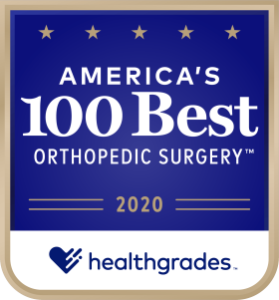
Pain Behind the Knee After Total Knee Replacement
Normal Healing and Inflammation
After surgery, it’s normal to feel aching or swelling behind the knee. This is part of the body’s healing process and usually improves over weeks. Learn more about the knee replacement recovery process.
Scar Tissue Formation (Arthrofibrosis)
Sometimes, excess scar tissue forms. This can tighten the back of the knee and limit movement. This condition is called arthrofibrosis and can cause stiffness and discomfort. For detailed information on scar tissue management, visit the American Academy of Orthopaedic Surgeons (AAOS).
Muscle or Soft Tissue Strain
Physical therapy exercises might strain muscles around the knee, like the hamstrings. This strain can cause pain that feels like it’s coming from behind the knee.
When to Be Concerned

Surgery can irritate small nerves around the knee. This may cause burning, tingling, or sharp pain. These symptoms often improve with time but should be checked if they persist. Read more about nerve pain after knee surgery at Mayo Clinic.
Mechanical Problems
Rarely, problems with the knee implant, such as loosening or misalignment, cause pain, especially during weight-bearing activities. Find out more about knee implant complications at AAOS.

Watch for signs like redness, warmth, swelling, fever, or calf pain. These symptoms require urgent medical care. Visit the Centers for Disease Control and Prevention (CDC) for information on post-surgical infections.
How We Diagnose the Cause of Your Pain
At Great Lakes Orthopaedics, we take your symptoms seriously. We perform:
- A thorough physical exam and review of your medical history
- Imaging tests like X-rays or MRI to check implant placement and tissue health
- Lab tests to rule out infection
- Physical therapy assessments to identify muscle or scar tissue issues
Learn more about our diagnostic services.
Treatment Options
| Cause | Treatment | Expected Result |
| Inflammation or muscle strain | Rest, ice, NSAIDs, physical therapy | Pain relief within weeks |
| Scar tissue (arthrofibrosis) | Stretching, manual therapy, possible minor surgery | Improved flexibility |
| Nerve irritation | Medications or nerve therapies | Reduction in nerve pain |
| Mechanical problems | Surgical revision if necessary | Restored knee stability |
| Infection or blood clots | Immediate antibiotics or anticoagulants | Prevent serious complications |
When to Contact Us
Seek medical attention if you experience:
- Increasing calf or leg swelling and pain
- Fever, chills, or redness around the knee
- Sudden knee instability or new mechanical symptoms
Tips to Reduce Pain Behind Your Knee
- Stay consistent with your physical therapy program
- Elevate and ice your knee regularly
- Monitor your symptoms and report any worsening pain
The content on this website is for informational purposes only and is not a substitute for professional medical advice, diagnosis, or treatment. Always consult a qualified healthcare provider with any questions about a medical condition. Do not ignore or delay seeking medical help based on content from this site. If you are experiencing a medical emergency, call 911 immediately. Great Lakes Orthopaedics makes no guarantees about the accuracy or completeness of the information and is not responsible for external links or third-party content.



